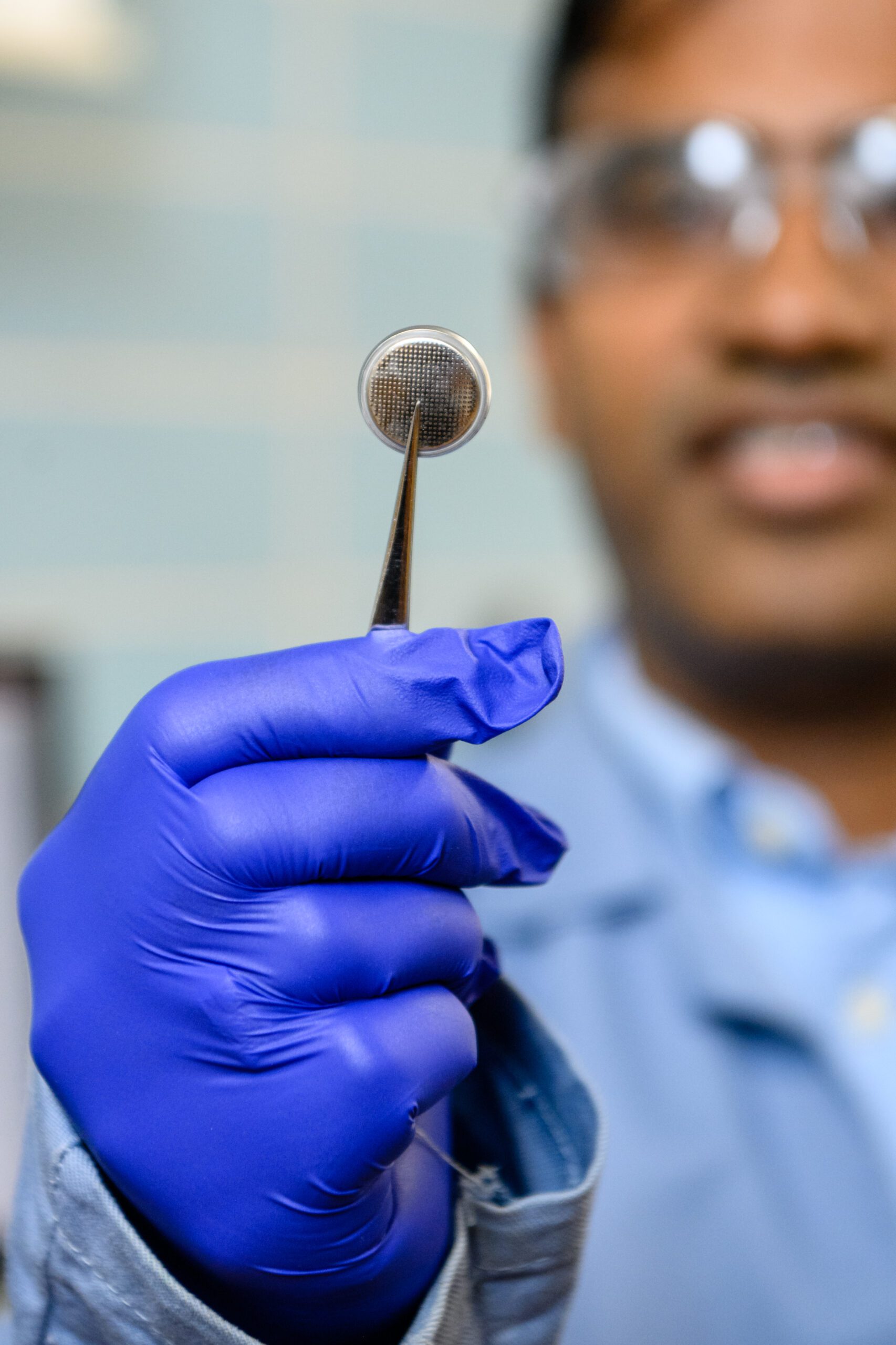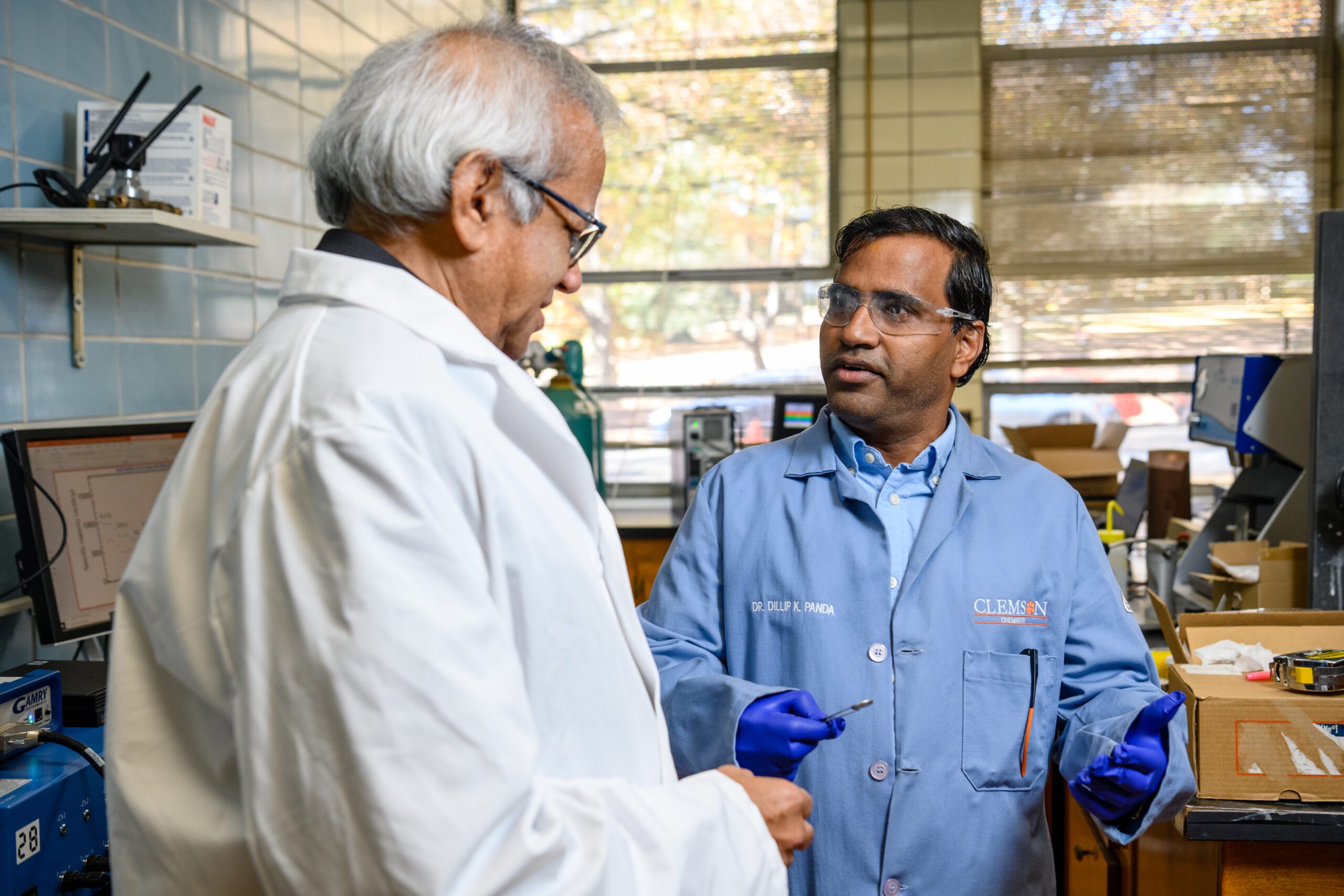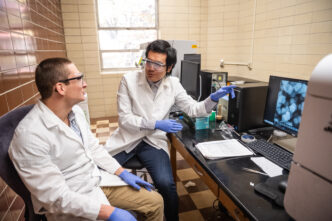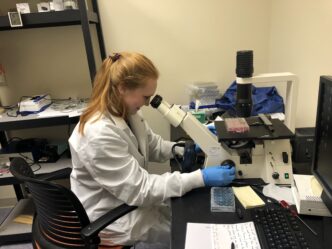Dillip Panda of Clemson University said the global shift away from fossil fuels is driving up the demand for next-generation batteries, making the research he is conducting a potential target for commercialization.
Panda, an assistant research professor, is focusing on a battery component called the anode. He is collaborating closely with Clemson’s Rajendra Bordia, the George J. Bishop III Endowed Chair Professor of Ceramics and Materials Engineering.
In some of their most recent work, Panda and Bordia sharpened the focus on lithium-ion batteries. They are commonly used in electric vehicles and portable electronics and have been considered for storing electricity generated from renewable sources, such as the sun and wind.
Anodes in commercially available lithium-ion batteries are usually made of graphite. Panda and Bordia are among the researchers exploring new materials to improve battery performance.
They were part of a team that recently created two types of silicon-oxycarbide materials, SiOC-I and SiOC-II. The team found the materials have the potential to be good anode materials for lithium-ion batteries due to their high capacity and stability.
Panda and Bordia also see the potential for their innovations to help advance solid-state batteries, potentially eliminating the need for the liquid organic solvent typically found in lithium-ion batteries. Solid-state batteries would be safer and could have better performance than those commonly in use now, the researchers said.
Panda said moving innovations from the lab to the marketplace will take a collective effort involving materials scientists and chemical engineers and that the next step for him is to find new sources of funding to advance the research.
“There is definitely a need, and this is definitely an important topic to work on,” he said.
Panda has tested the team’s work in an Olin Hall lab with batteries about the size of a quarter.

“The performance he has been able to demonstrate is very promising,” Bordia said. “There is significant interest in SiOC anodes since they are fire resistant and as result inherently safer than graphite. These materials are also potential anodes for Na-ion batteries which are being developed for grid-scale storage.”
Kyle Brinkman, chair of the Department of Materials Science and Engineering, said the research Panda and Bordia are conducting fits well with the department’s overall goals.
“The Department of Materials Science and Engineering is conducting pioneering work in the development of advanced materials, including solid-state batteries, that show high promise in opening new paths to a sustainable energy future,” he said. “Drs. Panda and Bordia are an important part of this effort. I congratulate them on their recent publications.”
Some of the work that Panda and Bordia have done was recently published in two journal articles:
1) Title: “A review of silicon oxycarbide ceramics as next generation anode materials for lithium-ion batteries and other electrochemical applications”
Publication: Journal of Chemistry Materials A
Co-authors in addition to Panda and Bordia: Ravindran Sujith, Jella Gangadhar and Michelle Greenough
Significant notes: The journal marked its 10th anniversary by highlighting authors who published in its pages for the first time, and Panda was among those featured. A graphic spotlighting the paper appeared on the inside back cover of the Oct. 14 edition. The journal’s blog ran an interview with Panda in November.
Citation: J. Mater. Chem. A, 2023,11, 20324-20348
2) Title: “Electrochemical Performance of Polymer-Derived Silicon-Oxycarbide/Graphene Nanoplatelet Composites for High-Performance Li-Ion Batteries”
Publication: ACS Applied Materials & Interfaces
Co-authors in addition to Panda and Bordia: Gangadhar, Nawraj Sapkota, Greenough, Santanu P. Datta, Apparao M. Rao and Sujith
Citation: ACS Appl. Mater. Interfaces 2023, 15, 25, 30039–30051

You can learn more about Panda and his work history on his LinkedIn page here.







